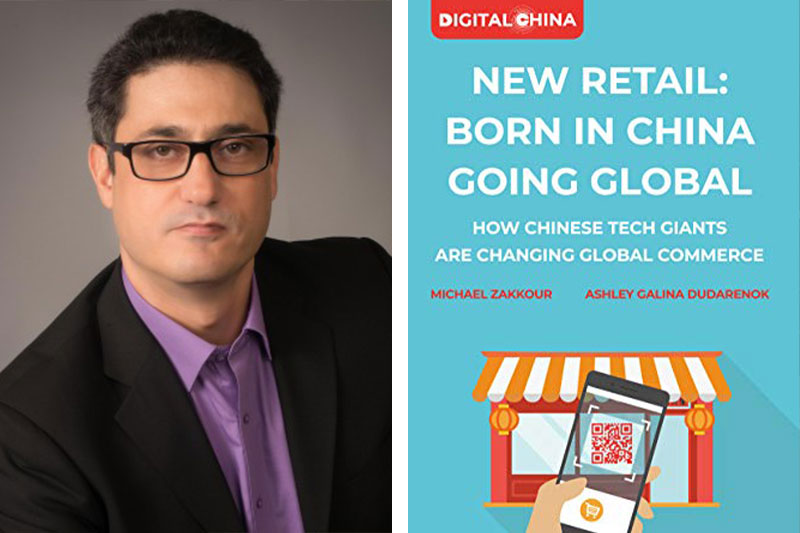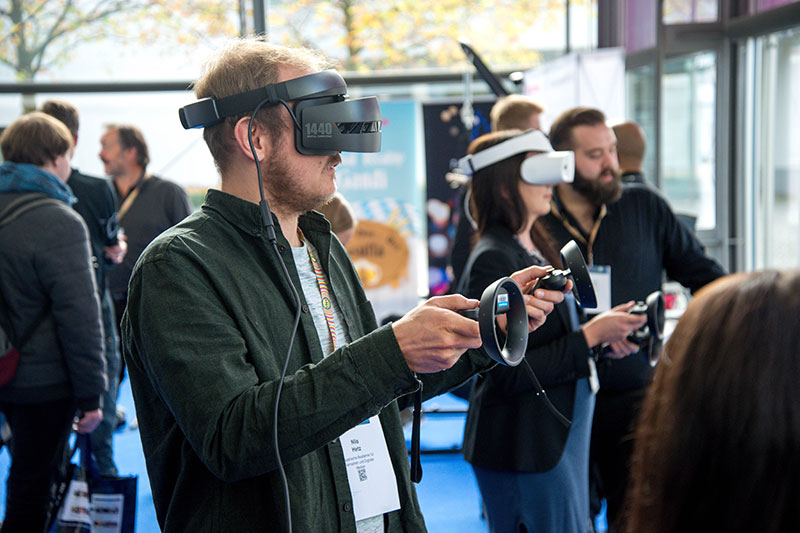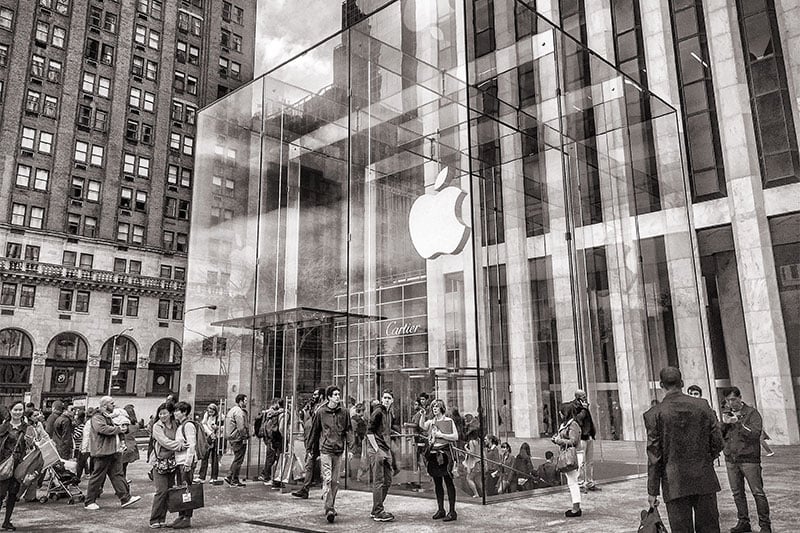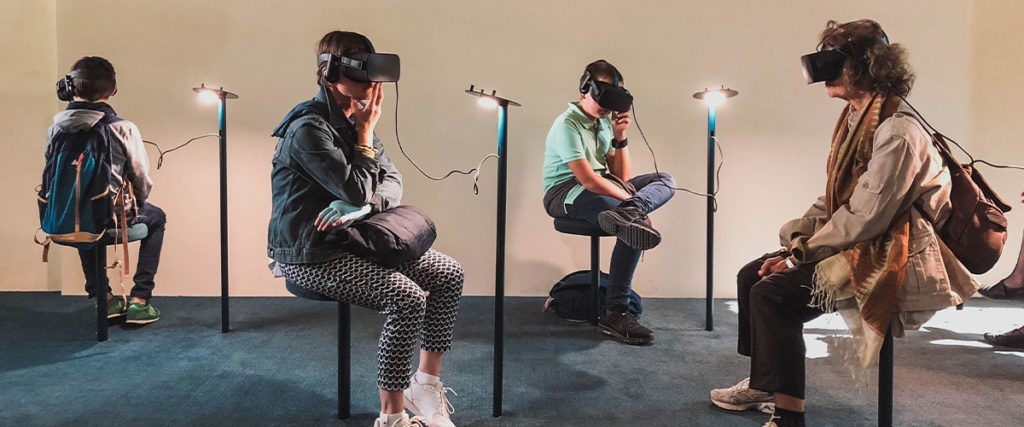From Alibaba’s New Retail to unified commerce, China e-commerce expert Michael Zakkour identifies 7 major retail trends in 2020, the effects of COVID-19 on retail and the future strategies that firms need to adopt to ensure their success.
With over 20 years of experience in e-commerce, China digital commerce expert Michael Zakkour, two-time bestselling author of ‘China’s Super Consumers’ and ‘The New Retail Revolution,’ spends his time considering the future of retail. Featured by CNN, BBC, The Wall Street Journal and Forbes, he is a recognised authority on e-commerce, New Retail strategy, and the modern Chinese consumer – subjects on which he has spoken about at Yale, UPENN, NYU and Columbia. His interest in global consumer behaviour started young. “I grew up in one of the great entrepreneurial booms of all time – the birth of the Internet and of e-commerce,” he shares. Citing Alibaba, JD, Amazon and Walmart as prime examples, he explains, “If you think about the companies who are the biggest in the world today, they all have some combination of technology and e-commerce, involvement with China, and logistics is their competitive advantage. That’s what really launched me into working with companies on their complete digital transformation, through reimagining how they make, move, sell and buy everything to leveraging digital commerce, China, and logistics.”
Swept up by the innovative frenzy of the era, he launched China marketing consultancy China BrightStar in 2005, which was later acquired by consulting firm Tompkins International. In 2019, however, he left to start up consultancy 5 New Digital, which operates out of Hong Kong, Shanghai and New York, helping firms adapt to the digital industrial revolution. “For me, it’s not just about the business. It’s about the greatest impact I can have in continuing to build bridges around the world between cultures and people,” he explains of his philosophy. “I think there’s an opportunity for me to follow my passion for building sustainable organisations and relationships centred around diversity and inclusiveness.”
Michael weighs in with the 7 major retail trends that will shape 2020 and beyond – and those that could help retailers weather the storm of Covid-19.

#1
COVID-19 Will See the Acceleration of Highly Integrated Digital Retail Tech
Given the rapid spread of COVID-19, retail is adapting quickly to accommodate a major shift in consumer needs, including “putting more resources towards digital transactions, digital marketing, and maintaining and strengthening the integrity of their supply chain and logistics infrastructure,” says Michael.
“In the short term, the crisis will bring down the hammer on the companies and models that were already teetering on the edge. Malls and department stores will shrink. Likely, only the premium and higher-ends will survive. Many legacy, middle-of-the-road, traditional retailers with massive exposure in real estate and store counts will die off.”
In a medium-to-long-term perspective, he predicts that the pandemic will kickstart a rapid acceleration in the adoption of multiple forms of retail technology – everything from in-store cashless, automated walk-in, walk-out shopping at grocery stores to the rapid adoption of New Retail ecosystems. “An acceleration of e-commerce transactions moving from 12% to perhaps 25-30% in the US and from 25-60% in China” could be on the books as well, marking a lasting shift towards the highly integrated use of digital technologies in retail.
As for what firms can do, he counsels employers to “keep as many people as employed as possible. Collectively, these are the same people who are consumers and customers. If retailers let everyone go, then demand could take years to recover.” Secondly, he strongly feels that retailers should take the time to set a new course for digital commerce. “Do what I have been saying to do for years. Step back, embrace the New Retail and plan for it.”
#2
The Future Isn’t Clicks Versus Bricks – It’s About Integration
The digital revolution now involves “the complete integration of online-offline technology, entertainment and logistics to create an entirely new experience for makers, sellers and buyers,” states Michael. Rather than pitting brick and mortar against e-commerce, he predicts that the most successful firms will learn to leverage both online and offline in an integrated system.
Already, this is happening. Major physical retailers such as Walmart and Target have gone digital, concentrating efforts on turning their current model into a unified commerce system. Simultaneously, online marketplace giants Amazon, Alibaba, JD and Tencent are going the other way by “successfully integrating physical retail into a marketplace digital-first environment.” As for digital-native brands, he believes that “They’re going to come to that realisation that adopting that single basket unified commerce and retail model is really the key to sustainability in 2020.”
You might also like How Does Influencer Marketing Work in 2020? WeChat Expert Shares Key Insights

#3
Physical Retail Still Matters – But It’s Going to be Experiential
“In the US, 85% of all transactions are still done in a physical environment. In China, roughly 80% of all transactions are still done in a physical environment,” Michael explains. Physical retail will continue to play a major role in the retail industry, although its function will shift towards a more experiential role, offering customers an immersive, interactive, fun experience that entertains, informs, and encourages engagement.
Already, major brands including Nike, L’Occitane and Gucci are experimenting with concept stores, Instagram-worthy interiors, and integrated designs that prioritise creating a fantastic (and memorable) customer experience that people will talk about. “You make it experiential. You make it digital. You’re connected to what you’re doing online and you don’t care if the sale is made in the store or online as long as they’re reinforcing each other.”
#4
The Adoption of Unified Commerce Will Accelerate Globally – Because It’s More Effective
“One thing I definitely expect is the acceleration of the process of global companies adopting unified commerce into their retail model,” Michael relates. Retail will no longer be about focusing in on single channels such as physical retail, e-commerce or pop-up stores. Instead, the industry will shift towards adopting more holistic strategies that acknowledge consumer interactions across entire retail ecosystems and habitats: “We should be thinking about unified commerce where all your consumer touchpoints hold equal weight in creating bigger and better commerce.”
So what does this mean for businesses? “You’re going to see unified commerce and new retail becoming more of a norm – and it will manifest itself with direct-to-consumer and digital-native brands waking up and realising they can’t really scale without physical [retail] nor without some concessions to the traditional way of doing retail.” Firms will be forced to integrate – at a minimum – elements of unified commerce to stay competitive.

#5
4 Pillars of Future Retail: Consumer Centricity, Convenience, Customisation & Contribution
In order for a brand to be successful, Michael counsels strict adherence to the four pillars of retail: consumer centricity, convenience, customisation and contribution. “The journey starts with the Chinese consumer – and this is happening more and more in the world. They have one simple, overriding demand – you can almost throw everything out – and that is, ‘Spoil me or else I will find a marketplace, a brand, a retailer that does.’”
As the market becomes more saturated and consumers have a plethora of options to choose from, it becomes all about putting the customer first, making a purchase as convenient as possible, customising your product to your customer, and allowing the customer to contribute to your process, brand and operation, all of which work together to give your brand the competitive edge it needs to win customers over.
#6
Companies Will Scale Quicker With Existing Giant Ecosystems – Then Build Their Own
With the rise of retail giant platforms such as Alibaba, Amazon and JD, smaller third-party firms are increasingly able to leverage these platforms’ existing functionality to promote their own brand and scale faster. “Who has built these giant ecosystems and how do I best engage the ecosystems and habitats that are available to me and leverage them?” Michael asks of firms. “But at the same time, how do I build my own ecosystem that involves entertainment, logistics, branding, and online-offline?”
However, commenting on how China’s highly sophisticated ecosystems have reshaped the retail process, Michael adds, “In China, these ecosystems are so much bigger than they are globally so you have to do less work to build your own ecosystem. Whereas in the rest of the world, your job is more evenly split between building your make-move-sell-and-buy process for the ecosystems that are built and then building your own smaller version of that to operate on your own.”
#7
Firms Will Have to Create a Localised Offering to Suit the Market – Or Fail
Localisation has always been a key concept in retail, but especially as consumers are now able to access increasingly competitive, convenient and customised products, it becomes ever more pertinent to cater your offering to your target demographic. Take China as an example. “Simply trying to export who you are to China doesn’t work. You need to build the China version of who you are,” Michael explains.
Advising firms to delve deep into the ‘core four’ of culture, history, philosophy and language of their target market, he believes that such due diligence will become essential to getting consumers to engage with your brand. Michael elaborates, “I talked once with the Head of International at Disney and I asked him what were some of the lessons he had learned and he said, ‘The big lesson was when we did Hong Kong, we exported Disney to China. And that didn’t work out very well for us at first. When we built the Shanghai Disney, we built the Chinese Disney from the ground up.”
Related Articles
The Role of Market Psychology: How Does Fear and Global Panic Affect Traders?
Advertising in Asia: What Does the Future Look Like?
6 Success Tips from Asia’s Top 25 Innovator Ashley Dudarenok





